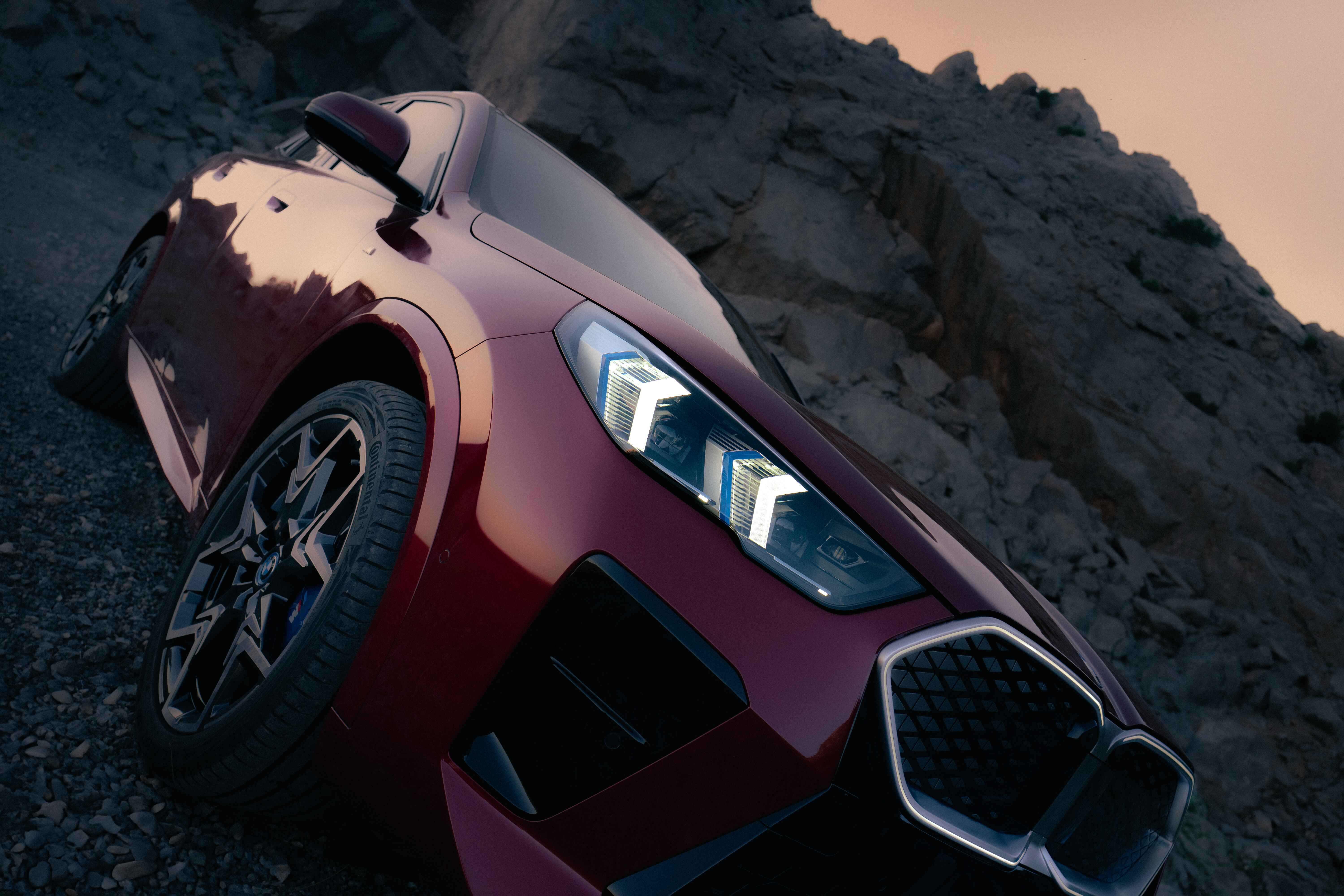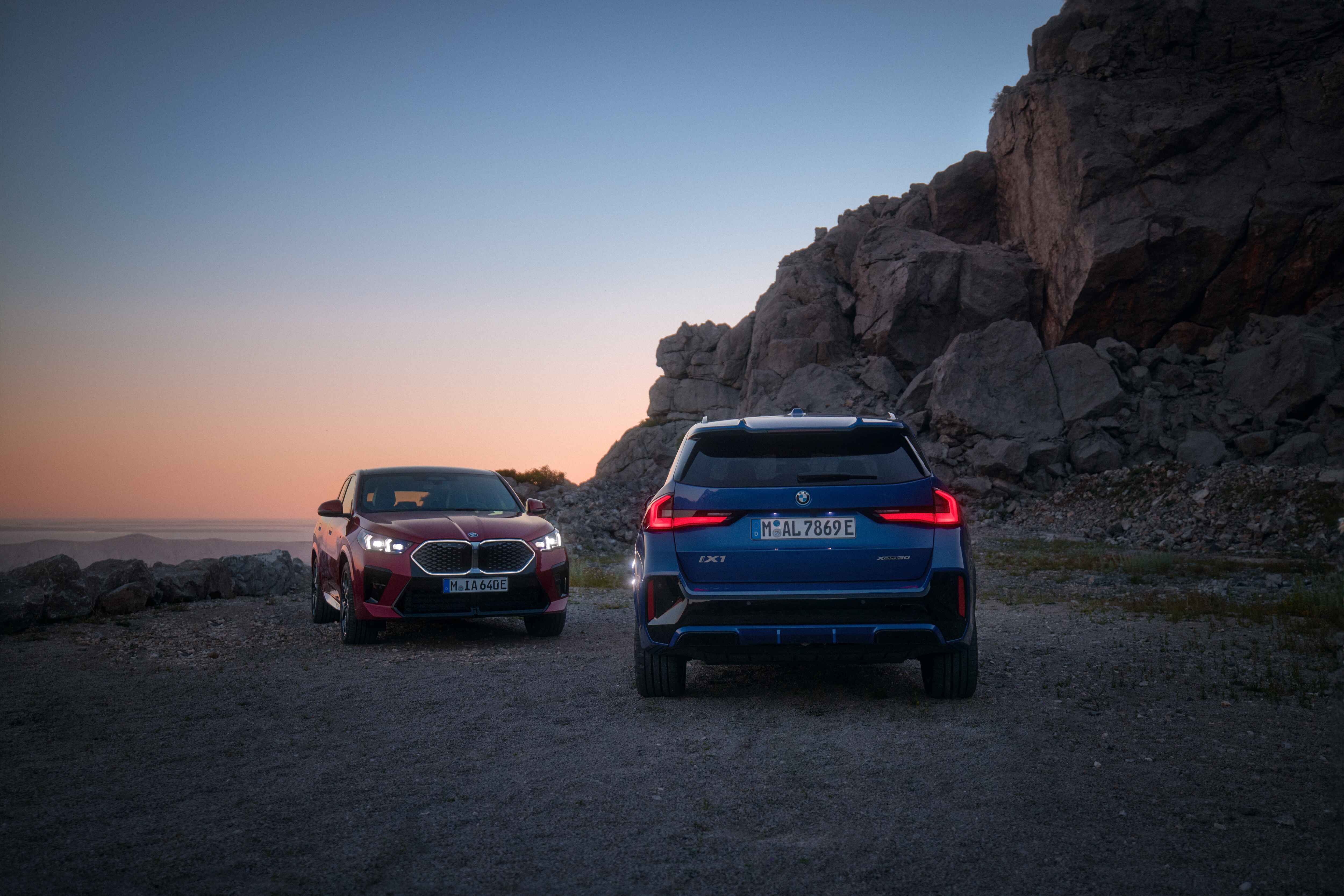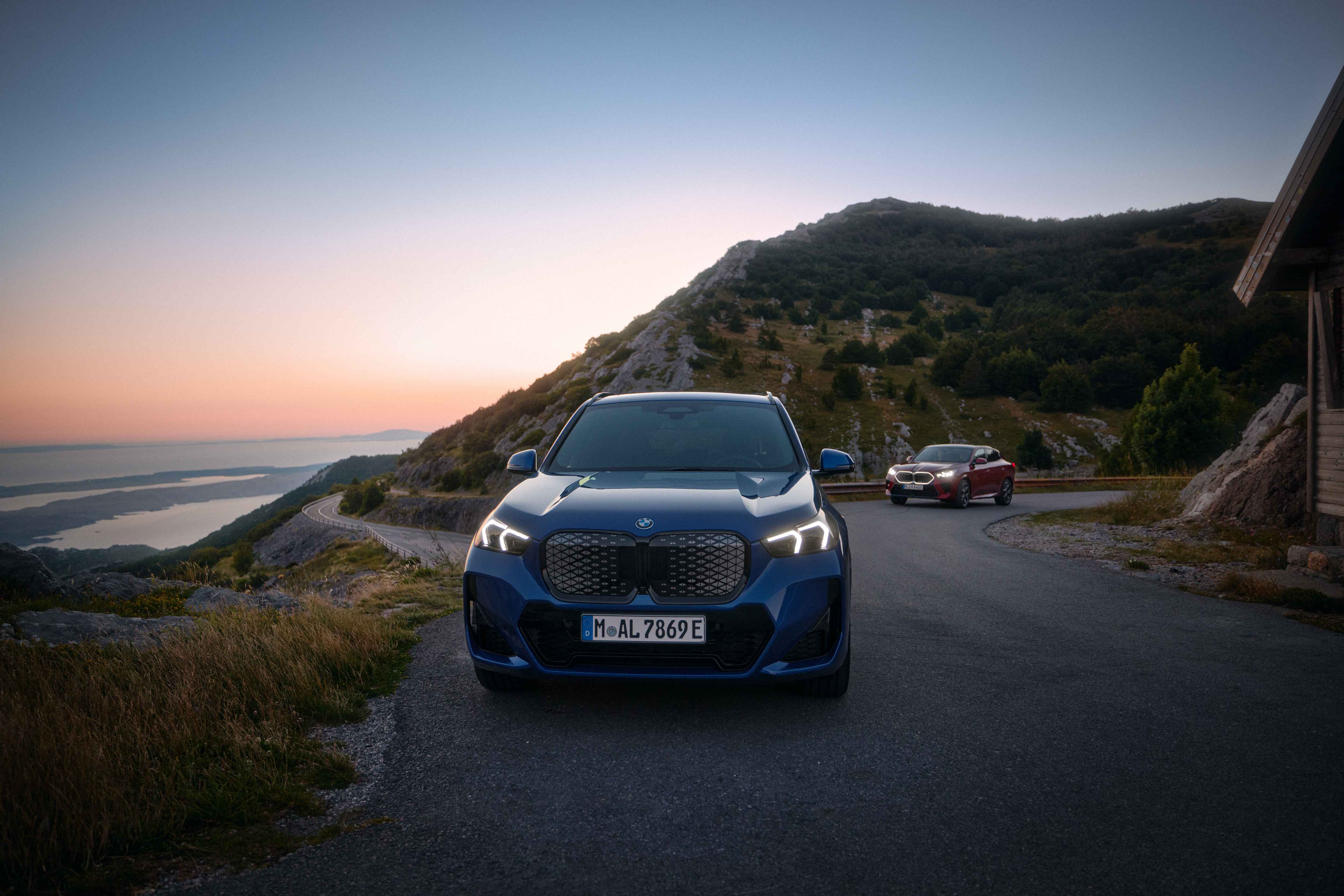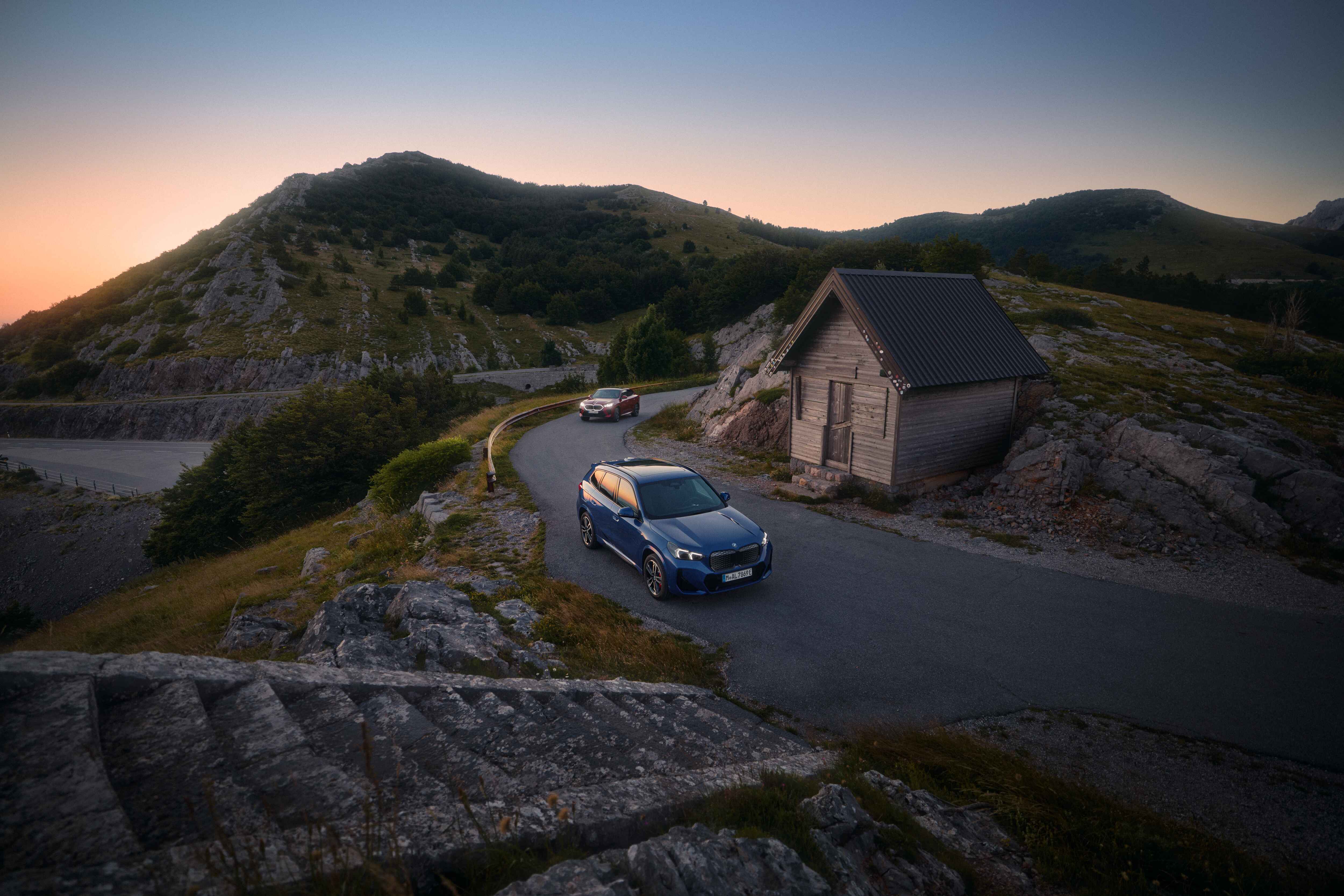The car we’ve chosen to highlight is called the BMW iX2 – and if you’re familiar with the current Bavarian Motor Works nomenclature, then you’ll immediately know that means that this is the all-electric version of the petrol-powered X2, which is still being sold.
Names aside, one thing that most people will have a reaction to is the shape of the vehicle. Some might think the iX2 looks like a bunch of boxes and triangles jammed together forming a sort of Battlestar Galactica spaceship, while others claim it’s a thing of automotive beauty. BMW concedes that the X2 “isn’t for everyone” and those who like slightly more conservative styling will buy the X1 or iX1.
As expected, the new iX2 is even more aggressive than the previous generation, which BMW sold slightly fewer than 23,000 units between 2018 and 2023. Only available in M Sport specification in Singapore, 19-inch alloy wheels are standard, with 20-inch ones being an option. Along with that incredibly square rear diffuser portion, you also get a rear wing and an optional illuminated kidney grille. Although it is 54mm longer than an X1, it is somewhat lower. However, it is significantly larger than the previous X2, being 194 mm longer and 64 mm taller.
As for power, the iX2 get a 64.8kWh (usable) battery capacity, so if you use less power, you get more range. The eDrive20 manages a WLTP rating (This is the test carried out by manufacturers to determine the range of an electric vehicle) “of up to 478 km.”
(Related: Redefining luxury in electric mobility)
The blocky, boxy design of this car will either appeal to you or make you want to purchase the more reasonable, less coupe-like iX1. However, the BMW iX2 has a slew of competitors like the Audi Q4 Sportback e-tron and Volvo EC40 are direct competitors, but then there’s also cars like the Mercedes-Benz EQA, the Polestar 2, the Hyundai Ioniq 5 and the Kia EV6, and we haven’t even mentioned all the new Chinese vehicles. That’s a lot of competition. An informed car buyer would certainly look at vehicles like the Polestar 2 and Hyundai Ioniq 5 before getting into an iX2, especially given the BMW’s firm ride and less-than-impressive range figures.
As for the car’s drivability, the good news is that the iX2 is better to drive than its internal combustion-engined sibling. BMW's paddle-activated boost mode and the instant torque from electric power helps the iX2, whereas the X2 seems sluggish and shaky. What’s more, the iX2’s steering is precise and tight. Even in its little electric crossovers, BMW manages to provide some steering feel, and the iX2 maneuvers through curves with precision. Although it isn't an M2, it is unquestionably superior to many of its competitors, and the car’s low centre of gravity keeps it flat around turns.
One of the great advancements from automotive electronics has been the ability to select drive modes and in the new iX2 there are six. You can choose from Personal, Sport, Efficient, Expressive, Relax, and Digital Art. All of those modes come with different artificial motor sounds. We found that driving everywhere in ‘Efficient’ mode and simply using the 10-second boost function for overtakes was the best compromise for maximum range. There are three levels of regenerative braking, too.
(Related: The senses of luxury)
The cockpit of the iX2 is impressive and has the ‘Live Cockpit Plus system’, which pairs a 10.25-inch digital instrument cluster with a 10.7-inch touchscreen to create one giant panel on top of the dash. The dial display is clear and easy to adjust with the buttons on the steering wheel, but the infotainment screen is too busy and doesn’t offer proper shortcuts for things like the climate controls.
The interior has super comfortable sports seats, a leather steering wheel, cruise control, four USB-C connections, and a rearview camera. Given the poor visibility from the raked rear screen, the latter is essential. The back seats do feel somewhat claustrophobic, but they are comfortable. EVs tend to have a problem with floor space as the batteries are mounted on the car’s floor making floor space cramped. Surprisingly, the rear boot has a very respectable 525 litres of cargo space.
When it comes to charging, the iX2 can rapid charge at speeds of up to 130kW, which means a 10 to 80 per cent top-up takes just 29 minutes (if you can find a plug that draws the maximum rate). That also means you could bag up to 120 kilometres of range with a 10-minute top-up. Alternatively, if you were to charge at home with an 11kW wallbox, the charge will take 6h 30m for the full 0 to 100 per cent boost.
In conclusion, the BMW iX2 eDrive20 is a very good, solid EV. However, given the outward appearance, sluggish performance, limited range, and its SGD $280,888 (inclusive of COE and VES rebate/surcharge) price tag, it isn’t the best deal going by light years. But if you’re a diehard fan of BMW, or Battlestar Galactica, this electric car might be your vehicle.








 "The iX2’s steering is precise and tight. Even in its little electric crossovers, BMW manages to provide some steering feel, and the iX2 maneuvers through curves with precision."
"The iX2’s steering is precise and tight. Even in its little electric crossovers, BMW manages to provide some steering feel, and the iX2 maneuvers through curves with precision."






 Back
Back
